Towering 11,000 feet above a million humans, Mount Etna is one of the most thoroughly monitored volcanoes on Earth. Hundreds of sensors dot its flanks, and for good reason: it’s Europe’s most active volcano, periodically spewing lava and huge plumes of debris that ground planes and generally make life miserable for those living in its shadow.
But now scientists have been spying on Etna with an unlikely new surveillance device: fiber-optic cables, like the ones that bring you the Internet. Writing last week in the journal Nature Communications, researchers described how they used a technique known as distributed acoustic sensing, or DAS, to pick up seismic signals that conventional sensors missed. This could help improve the early warning system that people in the surrounding parts of Italy rely on. Millions more around the world are also at the mercy of active volcanoes, which create chaos whether they are large or small.
DAS is shaking up (sorry) science in a big way. When the Internet was growing in the 1990s, telecoms ended up laying down more fiber-optic cable than they needed, since the material itself was cheap compared to the labor required to bury it. That extra cable remains unused, or “dark,” and scientists can rent it out to run DAS experiments. Engineers use it to monitor land deformation, geophysicists use it to study earthquakes, and biologists are even using underwater cables to pick up the vibrations of whale calls.
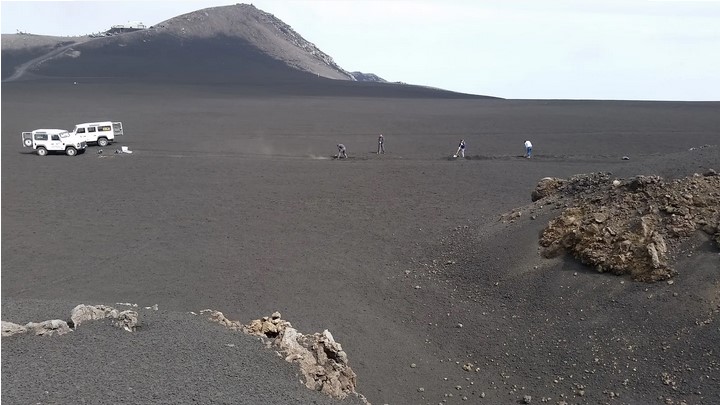
Fiber optics work by transporting signals from point A to point B as pulses of light. But if the cable is disturbed by, say, an earthquake, a tiny amount of that light gets bounced back to the source. To measure this, scientists use an “interrogator,” which fires a laser through the fibers and analyzes what comes back. Because researchers know the speed of light, they can determine disturbances at various lengths along the cable: something happening 60 feet away will bounce back light that takes slightly longer to get to the interrogator than something happening at 50 feet.
These measurements are sensitive. For example, in the spring of 2020, during the early days of COVID-19 lockdowns, scientists at Pennsylvania State University used their campus’ buried dark fiber optics to observe as pedestrian and vehicle movement waned and picked up again. They could even tell the source of the aboveground disturbance by the frequency of its vibration: a human footstep is between 1 and 5 hertz, whereas car traffic is 40 to 50 hertz.
This new research centers on the same idea, only these scientists did it on an active volcano. Because telecoms never bothered to lay fiber optics on Mount Etna, the researchers dug a three-quarter-mile-long ditch less than a foot deep and buried their own, not far from the volcano’s rim.

P. Jousset
In the image above, you can see how the fiber-optic cable was situated, its two branches outlined in white and black. (The red and yellow lines are faults.) The dots running along the cable lines are spots where the scientists had conventional sensors, like seismometers, which use pendulums to detect movement, and geophones, which convert ground movement into electrical signals. Because these sensors and the cable were colocated at those spots—at C666, C667, and so on—the researchers could compare how the different techniques were monitoring activity.
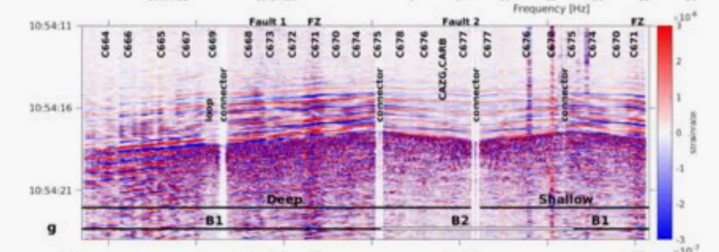
P. Jousset
The image above shows what a volcanic explosion (not a full-on eruption) in September 2018 looked like to the DAS network. The sensing stations are noted at the top of the graphic. The red and blue represent the deformation, or “strain rate” at which the cable elongates or contracts, at a given time for every six feet along the length of the cable. “So if the cable itself is, let's say, extended or compressed, then we see that in the signals,” says Charlotte Krawczyk, a geoscientist at German Research Centre for Geosciences and Technical University Berlin, co-author of the paper describing the work. “With all other seismic equipment, we don't do that. We measure the acceleration of the surface or things like that.”
Notice the darker vertical red and blue band at C671, which is an increase in the signal’s amplitude. If you look back at the map, you’ll see that C671 is sitting right on a fault. “This is probably an area where the density and the velocity of the ground is different,” says geoscientist Philippe Jousset of the German Research Centre for Geosciences, lead author of the paper. That changes how the energy ripples through the earth and subsequently how the DAS reads the event.
The cable detected other volcanic happenings, as well, which the conventional sensors either missed or barely recognized. It caught degassing events, in which the volcano releases a plume of water vapor and other gases like carbon dioxide. People on Etna at the time actually recorded video of this—ground-truthing at its finest. DAS also recorded “single tremor pulses,” which were distinct from degassing due to the lower frequency of their signal. (Think about how cars and pedestrians were distinct in the Penn State study.) The researchers reckon these pulses could be the movement of gas or liquid at depth, which in turn drives degassing events.
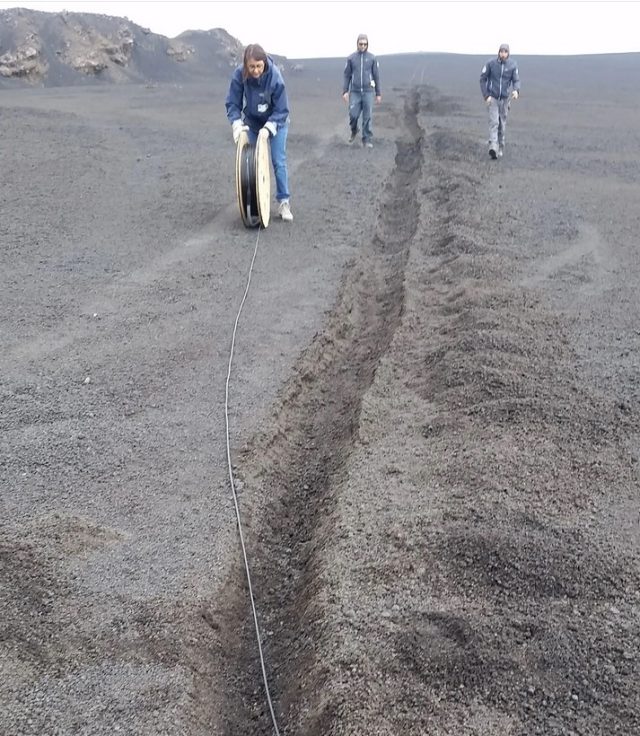
All of it is clearly sketched out in the fiber data, whereas conventional sensors fell short. “One of the main benefits of DAS that often tends to be overlooked is that DAS can pick up things in a lot of frequencies,” says geophysicist Ariel Lellouch, who uses the technology at Tel Aviv University but wasn’t involved in this study. An infrasound sensor, by contrast, only picks up low-frequency sounds. Plus, DAS is easier to maintain. “The fiber just lays there, compared to traditional sensors that need telemetry, and sometimes they need batteries and you need to replace them,” Lellouch says.
DAS could complement the traditional ways of monitoring volcanoes, says Marco Aloisi, who studies Etna at Italy’s National Institute of Geophysics and Volcanology but wasn’t involved in the research. Because so many people live around it, Etna is closely watched, with some 200 monitoring stations. But this requires a lot of people power, and the less time people spend on an active volcano, the better. “The real challenge is having many human resources and a reliable technology to allow a continuous operation of the entire system,” says Aloisi.
DAS, on the other hand, is a more passive system: you lay the cable and the data pours in. “In a sense, you're building a seismic observatory with fiber,” says Lellouch. “And then you can come back years later—unless the fiber has been melted by some huge eruption.”
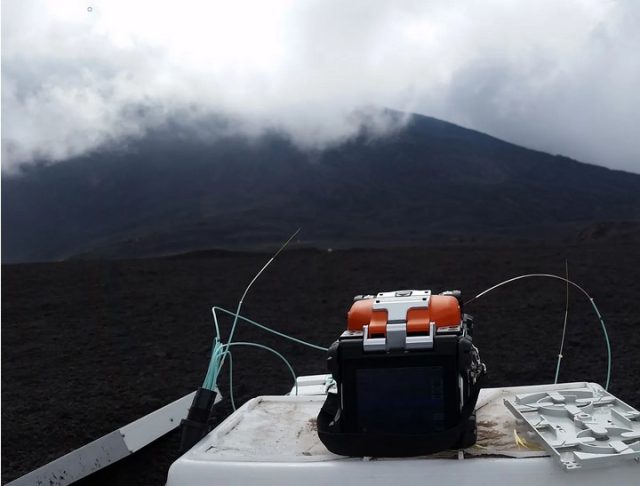
The authors of the paper want to try cables that are many miles in length, thus providing even more data. And in the future, scientists might even make a full loop around a volcano, providing 360-degree data that could advance recent improvements in early warning systems.
A week before Etna’s explosive eruption in July 2001, for instance, data gathered by GPS instruments showed that monitoring stations were moving farther apart, indicating that Etna was bulging with magma that had moved up from lower depths. Back then, there wasn’t the real-time monitoring that there is now, so it took scientists a few days to process the data and issue a warning. (Luckily, in that case, they knew early on that the eruption wasn’t going to be a serious threat to people.) Perhaps, says Aloisi, DAS could pick up signals that those conventional sensors miss, honing the warning system even further. “This technology allows small signal detection, detailed structural imaging, and a more acute understanding of the dynamics underlying magmatic processes,” says Aloisi.
The earlier the warning, the earlier people can evacuate and the more lives can be saved. “To extend this time to warn the people and to help them get away from the event—this is the purpose, always,” Krawczyk says. “If we understand much better what processes might be precursors, and that indicate what could be a new parameter for warning, this could be an incredible new knowledge.”
This story originally appeared on wired.com.


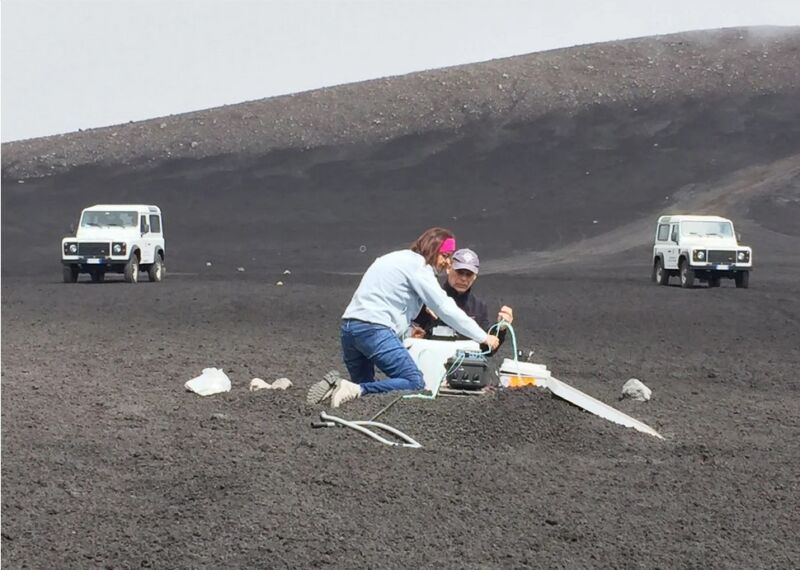
3175x175(CURRENT).thumb.jpg.b05acc060982b36f5891ba728e6d953c.jpg)

Recommended Comments
There are no comments to display.
Join the conversation
You can post now and register later. If you have an account, sign in now to post with your account.
Note: Your post will require moderator approval before it will be visible.